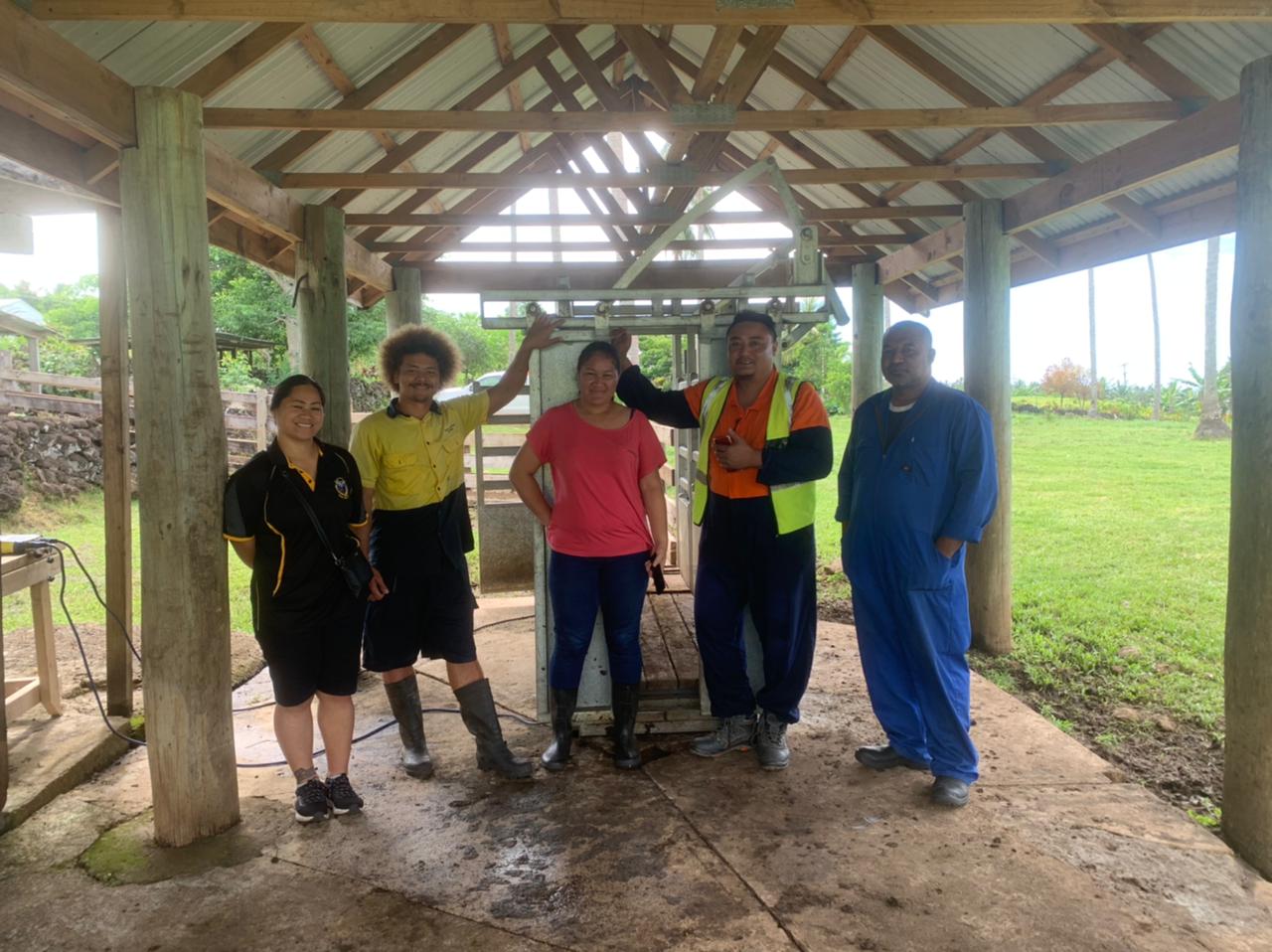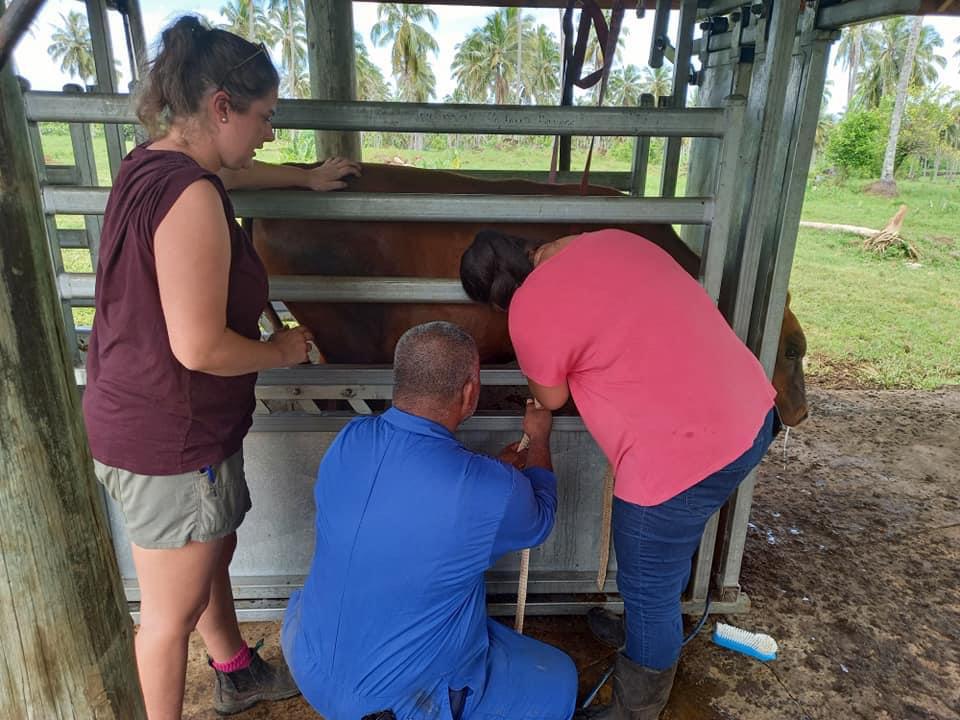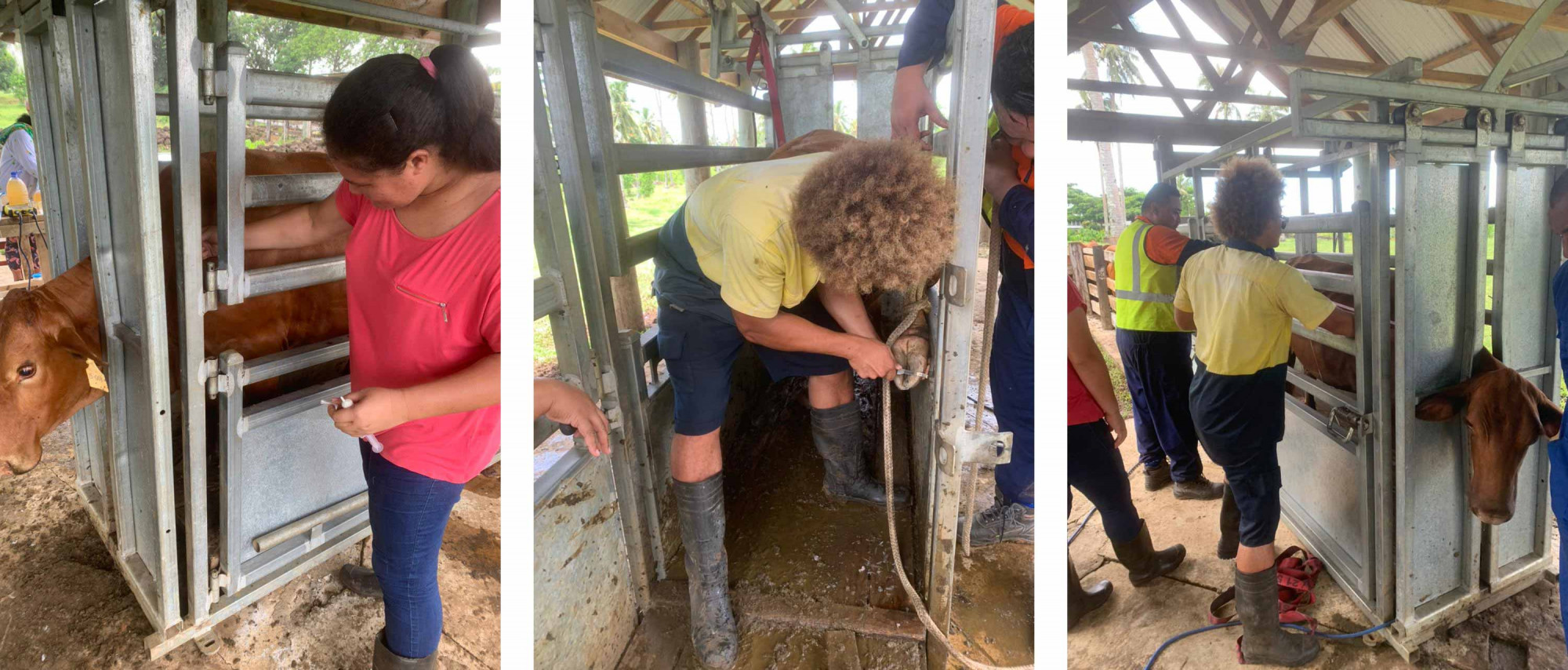13 Jan 2022
Strengthening diagnosis and treatment of cattle lameness in Samoa to improve appropriate use of antibiotics
In partnership with the Samoan Ministry of Agriculture and Fisheries and the Animal Protection Society, the COMBAT-AMR project is tackling the rising threat of antimicrobial resistance (AMR) through improving the appropriate use of antibiotics to treat animals.
An important component of the project is building the capacity of paraveterinarians in Samoa to diagnose and treat common illnesses of farm animals, with a particular focus on using antibiotics appropriately.
Incorrect use of antimicrobials for treatment of both animals and humans is a major contributor to the emergence of resistance within bacteria carried by these populations.
Resistant bacteria can spread in hospitals, communities, homes and farms. They can also spread through the environment , particularly in waterways contaminated through inadequate sewage and water treatment, and through food that is contaminated during handling, processing and distribution, or directly from food-producing animals
The animal health workplan was launched in December 2021 to strengthen the Samoan animal health workforce by developing diagnosis and treatment guidelines in tandem with a series of practical hands-on workshops. These workshops are designed to strengthen expertise in the diagnosis and administration of appropriate antibiotic treatments for the most common animal illnesses.

Paraveterinarians participating in training workshop.
Led by Dr Harriet Thornton, a veterinarian in the COMBAT-AMR Animal Health team, the first workshop focused on examining, diagnosing and treating cattle lameness, which was identified as a key area of need during scoping sessions with the local workforce.
“During these sessions we identified several barriers that were preventing the correct use of antibiotics in lame cattle,” says Dr Thornton.

Dr Harriet Thornton leading training with paraveterinarians in Samoa.
“These included lack of knowledge in anatomy, history taking, lameness scoring, foot lesions, treatments and a lack of understanding of the pathology and causes.”
Co-development of workshop plans with the local animal health workforce has been essential to the success of the training.
Key learnings and challenges identified during and after the workshop support a holistic approach to antimicrobial stewardship, addressing barriers to correct antibiotic use that are much wider than just the selection and dose of antibiotics.
“Animal handling, examination, weight estimation, facilities, knowledge of anatomy and abnormalities all play a part in the issues surrounding the appropriate use of antimicrobials,” says Dr Thornton.

“At the conclusion of our workshop, all the participants had gained broad knowledge and further confidence in diagnosing and treating cattle lameness, which will contribute to changing their prescribing practices moving forward.”
COMBAT-AMR will continue working to identify key areas of need and develop holistic approaches to capacity building to mitigate AMR in Samoa and other Pacific Island Countries.


